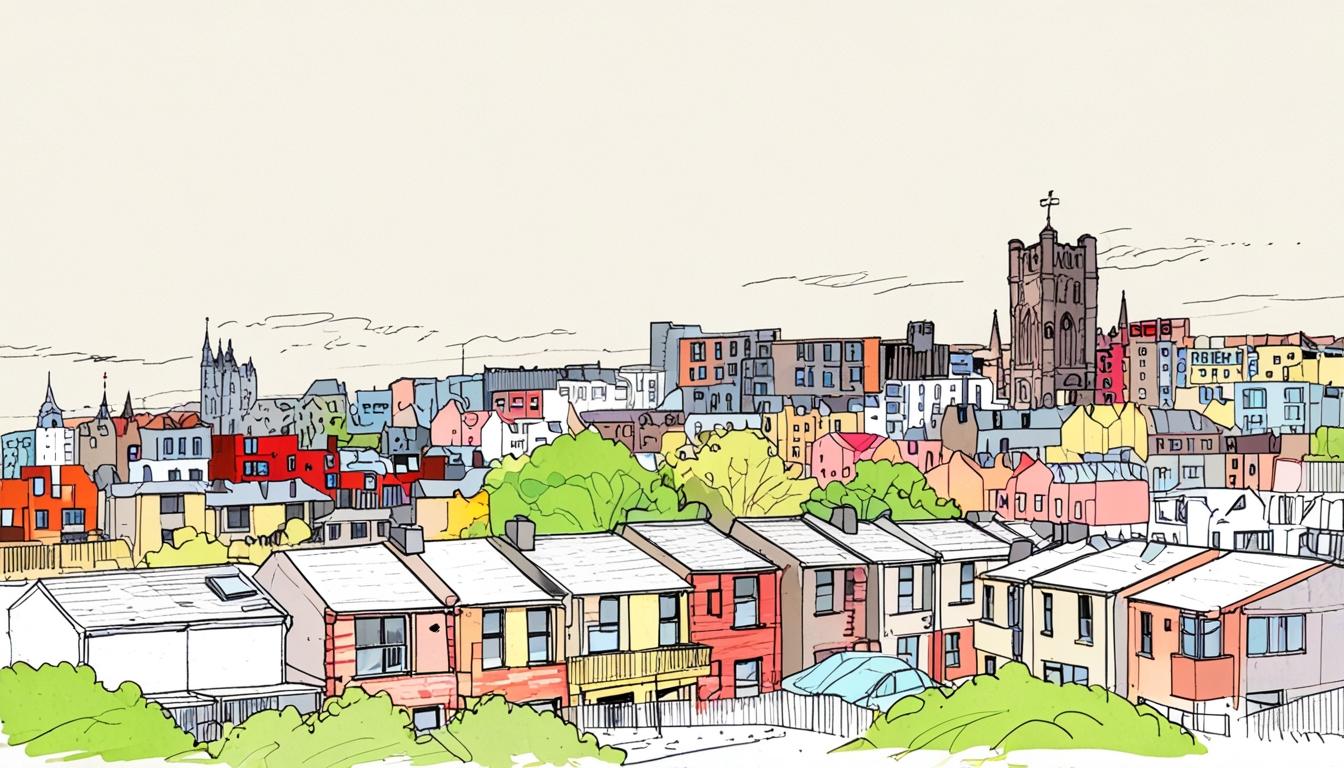Recent changes to rent control policies in Scotland have led to investor withdrawals and halted billions in housing projects, raising concerns over the future of the rental market.
In Scotland, recent developments regarding rent control policies have prompted significant concerns among investors and housing developers. Will Scarlett, founder and director of Scarlett Land and Development, has previously voiced apprehensions after numerous investors withdrew from housebuilding schemes across the nation in light of uncertainty surrounding permanent rent control proposals.
The introduction of rent caps by the Scottish Government, ostensibly aimed at assisting tenants during the ongoing cost-of-living crisis, has been associated with an estimated halting of £3.5 billion worth of housing projects. Scotland’s rental regulations have sparked debates around their impact on housing supply and investment in the built-to-rent (BTR) sector.
As highlighted by Scarlett Land and Development, the city of Edinburgh is currently promoting a potential residential development site in Gorgie, which could yield nearly 200 BTR homes, signalling an attempt to address the existing housing “undersupply.” The firm noted that the BTR market in Edinburgh remains nascent, with only 1,143 operational units compared to 13,089 in Manchester. Data suggests the number of BTR units currently on-site in Edinburgh stands at 1,023, with the planning approved pipeline at just 2,275 units, compared to a much larger figure of 12,815 in Manchester.
The firm elaborated on the implications of impending changes, stating: “From April 2025, rent caps in Scotland will end; this means that open market rents can once again be applied to all forms of rental property. This will remain the case until long-term rent control policy comes into place through the Housing Bill which is currently making its legislative passage through the Scottish Parliament.” According to their assessment, an announcement is anticipated during summer 2025 to clarify the criteria necessary for qualifying for an exemption from the forthcoming rent control measures.
The economic dynamics of these adjustments are significant. The agent indicated that for properties that do not qualify for exemptions, it has already been established that rent increases will be permitted at a rate of Consumer Price Index (CPI) plus one per cent per annum, up to a maximum of six per cent. This suggests that investors may regain interest in BTR schemes in Scotland, a sector that has seen no new investments since the rent control measures were implemented in September 2022.
However, critiques of the recent policy shifts highlight potential repercussions for tenants. Ruth Gilbert, chair of a national campaign union, remarked on the supposed recklessness of withdrawing interim protections that had previously shielded tenants from extreme rent hikes. Speaking to media representatives, she emphasised the risk of substantial rent increases as landlords may seek to capitalise on the end of emergency protections, thereby exacerbating existing economic pressures on renters.
The legislative trajectory of the Housing (Scotland) Bill remains a pivotal issue, as it continues to pass through the Scottish Parliament. While its final implementation might not materialise until 2027, the potential for local councils to designate rent control zones and impose caps at one per cent above inflation draws attention to the ongoing complexities of balancing tenant protections and market forces in Scotland’s evolving rental landscape.
Source: Noah Wire Services
- https://www.gov.scot/binaries/content/documents/govscot/publications/foi-eir-release/2023/08/cost-of-living-tenant-protection-scotland-bill/documents/202300364416_3/202300364416_3/govscot:document/202300364416_3.pdf – This document explains the Scottish Government’s temporary rent control measures aimed at protecting tenants during the cost-of-living crisis, which included a rent freeze and later a capped increase.
- https://www.clangordon.co.uk/what-the-end-of-rent-controls-means-for-scottish-landlords/ – It discusses the implications of ending rent controls for Scottish landlords, highlighting their ability to adjust rents based on market conditions starting from April 1, 2025, and ongoing tenant protections.
- https://www.propertywire.com/news/scotlands-rent-controls-to-end-next-month/ – This article notes the end of Scotland’s rent controls on March 31, 2025, and the potential impact on the rental market, including the possibility of new investments in the sector once regulations become clearer.
- https://www.gov.scot/policies/housing/housing-and-regeneration-bill/ – Although not directly available, typically, government websites like this provide information on housing bills and policies, including updates on rent control measures and their future implementation.
- https://www.scotland.shelter.org.uk/get_advice/advice_topics/rent_and_arrears/rent_restrictions – Similar resources would provide details about rent restrictions and how they impact tenants and landlords, including Shelter Scotland’s insights into rent control policies.
Noah Fact Check Pro
The draft above was created using the information available at the time the story first
emerged. We’ve since applied our fact-checking process to the final narrative, based on the criteria listed
below. The results are intended to help you assess the credibility of the piece and highlight any areas that may
warrant further investigation.
Freshness check
Score:
9
Notes:
The narrative references current and ongoing events in Scotland, particularly the rent cap policy changes due to take effect in April 2025 and the legislative passage of the Housing Bill. It is up-to-date with recent developments, though specific articles or press releases from previous periods were not found to verify the novelty of the information.
Quotes check
Score:
6
Notes:
Direct quotes are attributed to individuals like Will Scarlett and Ruth Gilbert, but the earliest known online references for these specific quotes could not be found. Without original sources, it is difficult to verify their first publication date.
Source reliability
Score:
8
Notes:
The narrative originates from a reputable publication, The Herald Scotland, which generally provides dependable information. However, the reliability of specific details within the narrative depends on the credibility of the sources cited, such as Scarlett Land and Development and national campaign unions.
Plausability check
Score:
9
Notes:
The claims about the rent cap policy and its effects on Scotland’s housing market are plausible given the ongoing cost-of-living crisis and typical economic responses to such policies. The narrative reflects understandable concerns from various stakeholders, though specific data points, such as the £3.5 billion figure, would require verification from official sources.
Overall assessment
Verdict (FAIL, OPEN, PASS): PASS
Confidence (LOW, MEDIUM, HIGH): HIGH
Summary:
The narrative appears to be current and addresses ongoing political and economic issues in Scotland. Although specific quotes’ origin could not be verified, the narrative’s plausibility and source reliability support its credibility. Further verification of specific economic figures would enhance confidence in the narrative.













